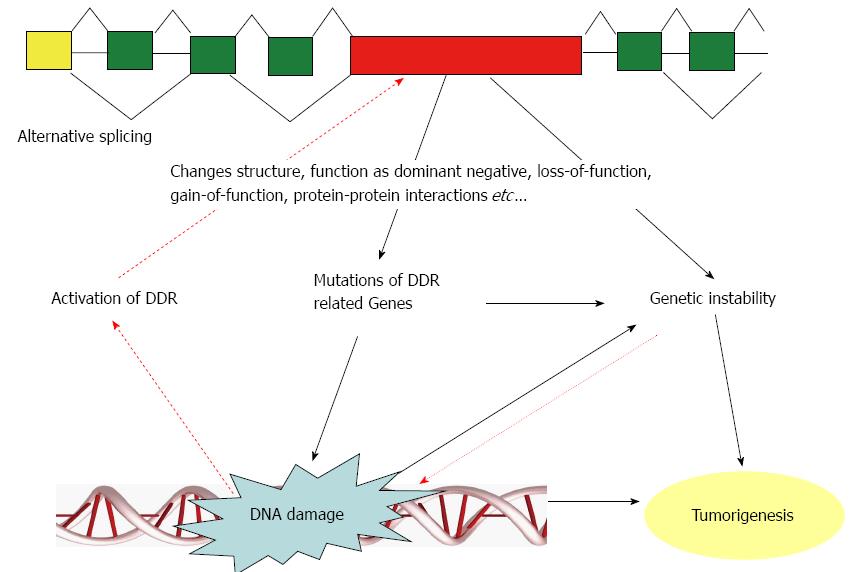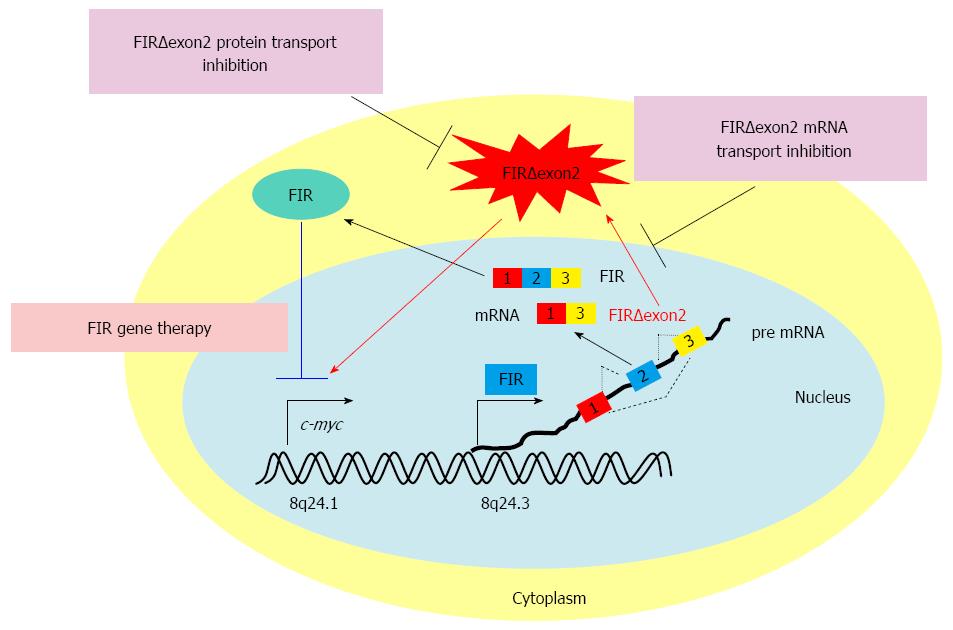Copyright
©2014 Baishideng Publishing Group Inc.
World J Gastroenterol. Dec 14, 2014; 20(46): 17305-17313
Published online Dec 14, 2014. doi: 10.3748/wjg.v20.i46.17305
Published online Dec 14, 2014. doi: 10.3748/wjg.v20.i46.17305
Figure 1 Schematic view of the possible connection between alternative splicing and DNA damage.
When DNA damage occurs, DNA damage response (DDR) is activated, which then activates alternative splicing that leads to mutations and splicing alteration of DDR-related genes. This process leads to the accumulation of DNA damage. DNA damage is a major cause of genetic instability. On the other hand, alternative splicing directly or indirectly causes genetic instability via mutations of related genes including DDR-related genes. Genetic instability is one of the major causes of tumorigenesis.
Figure 2 A model of cancer diagnosis and treatment targeting alternatively spliced variant forms.
c-Myc has a critical role in cell proliferation and tumorigenesis. An far upstream element binding protein-interacting repressor (FIR) splice variant that lacks exon 2 (FIRΔexon2) activates c-myc transcription by disabling authentic FIR repression of c-myc in cancer cells[40]. FIR gene therapy is a potential cancer treatment[98]. FIRΔexon2 protein inhibition of transport into the nucleus and/or FIRΔexon2 mRNA inhibition of export into the cytoplasm may be potential molecular targets for future cancer therapy for suppression of c-Myc. FIR and/or FIRΔexon2 mRNAs in peripheral blood are potent biomarkers for cancer detection[97].
- Citation: Rahmutulla B, Matsushita K, Nomura F. Alternative splicing of DNA damage response genes and gastrointestinal cancers. World J Gastroenterol 2014; 20(46): 17305-17313
- URL: https://www.wjgnet.com/1007-9327/full/v20/i46/17305.htm
- DOI: https://dx.doi.org/10.3748/wjg.v20.i46.17305










